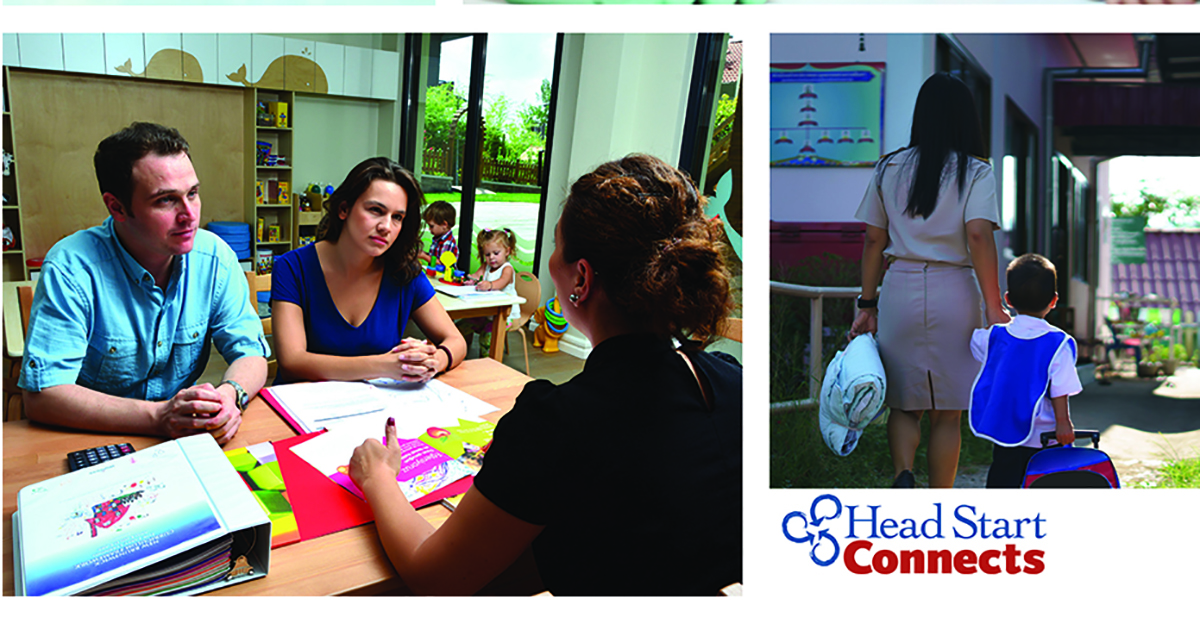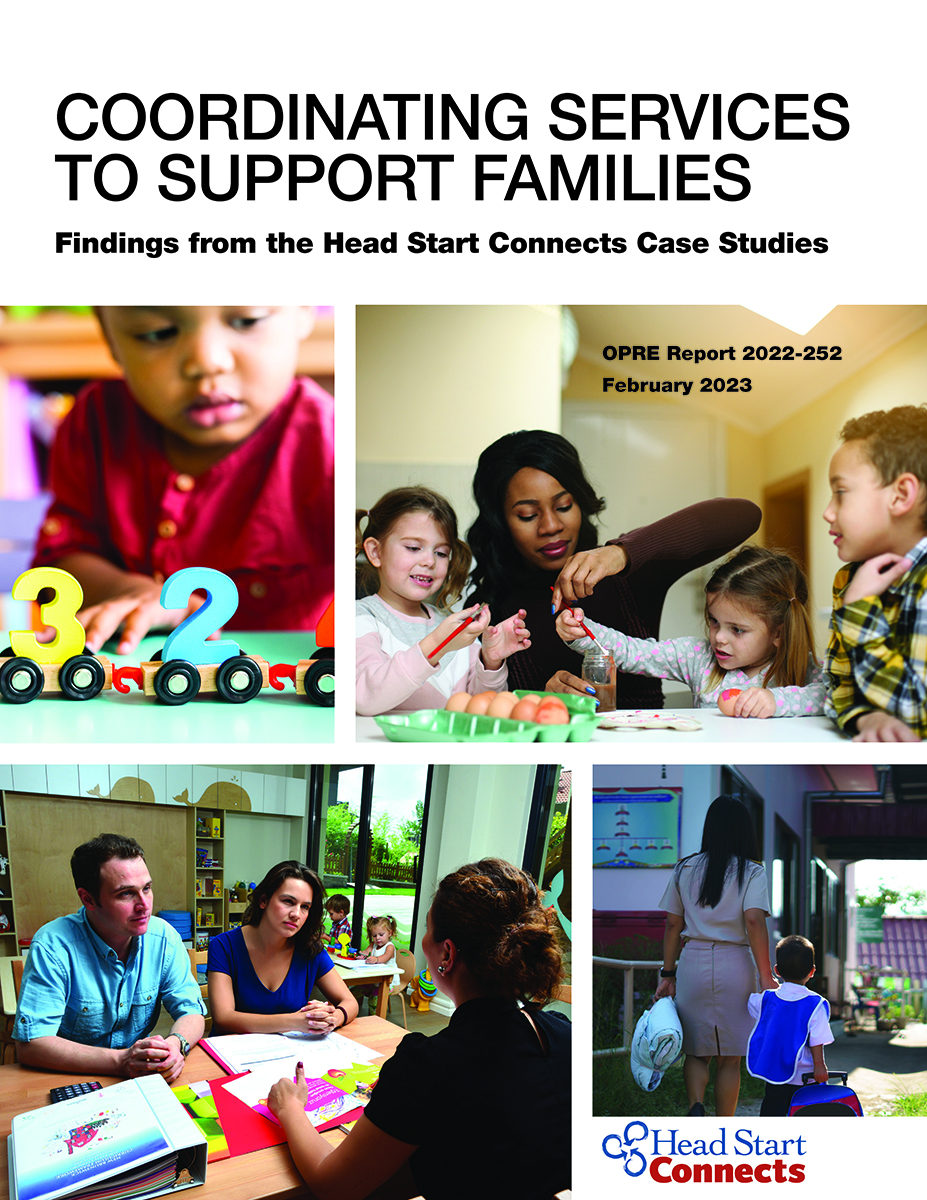Commentary by Meghan McCormick, Teresa Eckrich Sommer, Terri Sabol, and JoAnn Hsueh
Spotlight on Poverty
Coordinating Services to Support Families
Findings from the Head Start Connects Case Studies

Introduction
 One of the hallmarks of Head Start is its whole-family approach to the services it provides: improving children’s well-being by supporting families’ well-being. For children, that philosophy means supporting their health, development, and school readiness, while for families it includes their physical and mental health, housing, and financial stability. Head Start aims to do this over the long term by providing a comprehensive, integrated set of support services that are tailored to meet the individual needs of parents and families as well as the needs and resources of local communities.
One of the hallmarks of Head Start is its whole-family approach to the services it provides: improving children’s well-being by supporting families’ well-being. For children, that philosophy means supporting their health, development, and school readiness, while for families it includes their physical and mental health, housing, and financial stability. Head Start aims to do this over the long term by providing a comprehensive, integrated set of support services that are tailored to meet the individual needs of parents and families as well as the needs and resources of local communities.
Beyond basic information about the services that Head Start programs offer, little is known about exactly how the programs coordinate the provision of those services. To fill this knowledge gap, the Administration for Children and Families’ Office of Planning, Research, and Evaluation contracted MDRC and its partners—NORC at the University of Chicago and MEF Associates—to conduct Head Start Connects: Individualizing and Connecting Families to Comprehensive Support Service. The project aims to gather information on the strategies, processes, and practices programs use to coordinate family support services so that service coordination is aligned with individual family needs and fosters family well-being.
The Head Start Connects research team conducted case studies with six Head Start programs across the country to learn about their processes. The case studies used a multiple-case design to explore the service coordination from multiple perspectives—Head Start staff, families, and local community service providers—via semi-structured, in-depth interviews. Although data collection took place from September to December 2020, amid the COVID-19 pandemic, this report focuses on coordination practices at case study sites prior to the pandemic. A separate brief published online in March 2022 focused on how the six sites adapted their coordination of family support services in response to the pandemic.
Purpose
The Head Start Connects case studies aim to fill the knowledge gap about the strategies programs use to coordinate family support services and the processes or practices they use to ensure that service coordination is aligned with individual family needs and fosters family well-being. The design, with in-depth, semi-structured interviews and intentionally selected programs and respondents, allowed for a thorough examination of the coordination process from the perspectives of Head Start staff members, parents, and community providers associated with six Head Start programs. This report provides a detailed account of how the case study sites coordinated family support services.
Key Findings and Highlights
The main findings from the Head Start Connects case studies report detail key aspects of family support services coordination and factors that facilitated the process:
Site Structure and Organization
- Family support service coordination was led by family support workers, with supervision and support from their managers and occasional involvement from other Head Start staff, usually teachers.
- Family support workers’ roles extended beyond direct family service coordination.
- Caseload size varied across Head Start programs.
- Head Start program directors, family and community partnership managers, and family support workers described supervision as an essential component of family service practice, along with team learning and support. Supervision practices varied: Regular group or individual sessions ranged from twice a week to once a month.
Coordination Process
- Family support workers coordinated family support services through a series of standard activities tailored to individual families’ needs and aligned with what is specified in the Head Start Program Performance Standards.
- Head Start programs varied in the tools they used to determine families’ strengths and needs. Some tools were created by outside developers (for example, Parent Gauge, Mobility Mentoring) while others were created in-house.
- All Head Start sites used the ChildPlus management information system.
Engaging Community Providers
- Head Start sites worked with multiple public agencies, nonprofit social services providers and community action agencies, and faith-based and community organizations to meet families’ basic needs and provide family support services.
- Identifying community providers and establishing relationships with them required ongoing effort from Head Start staff.
- Having partnerships with community providers (both informal and formal) and a broad array of services available in the community facilitated family support workers’ ability to connect families to the services they needed.
Engaging Families
- Building rapport and relationships with parents was key to getting families necessary support.
- Family support workers exhibited dedication to supporting families and put a lot of effort into engaging parents in family support services, at times going beyond their formal job requirements.
- Despite family support workers’ efforts to engage families, not all parents fully participated in family support services or took up services after receiving a referral.
- What families got out of family support services varied, but most parents agreed on one thing: They valued their relationships with their family support workers.
Document Details
Strassberger, Marissa, Carol Hafford, and Kate Stepleton. 2023. Coordinating Services to Support Families: Findings from the Head Start Connects Case Studies. OPRE Report 2022-252. Washington, DC: Office of Planning, Research, and Evaluation, Administration for Children and Families, U.S. Department of Health and Human Services.







